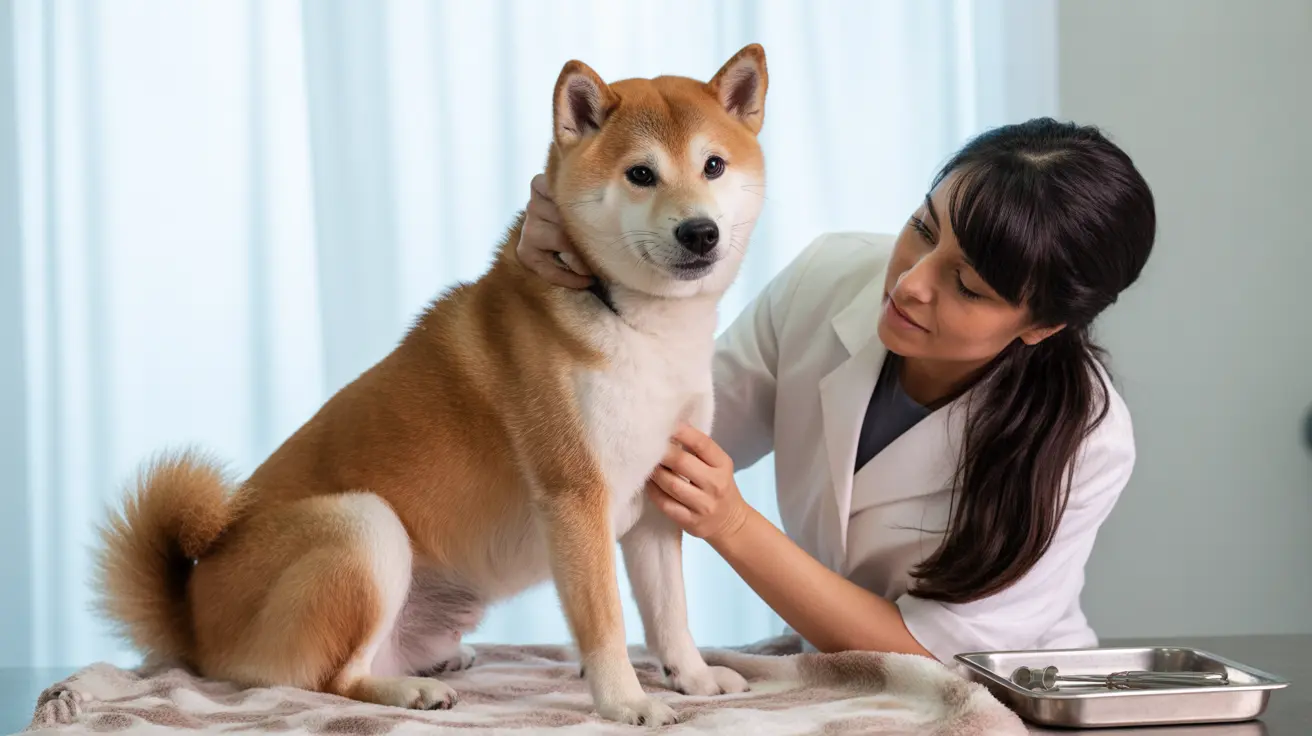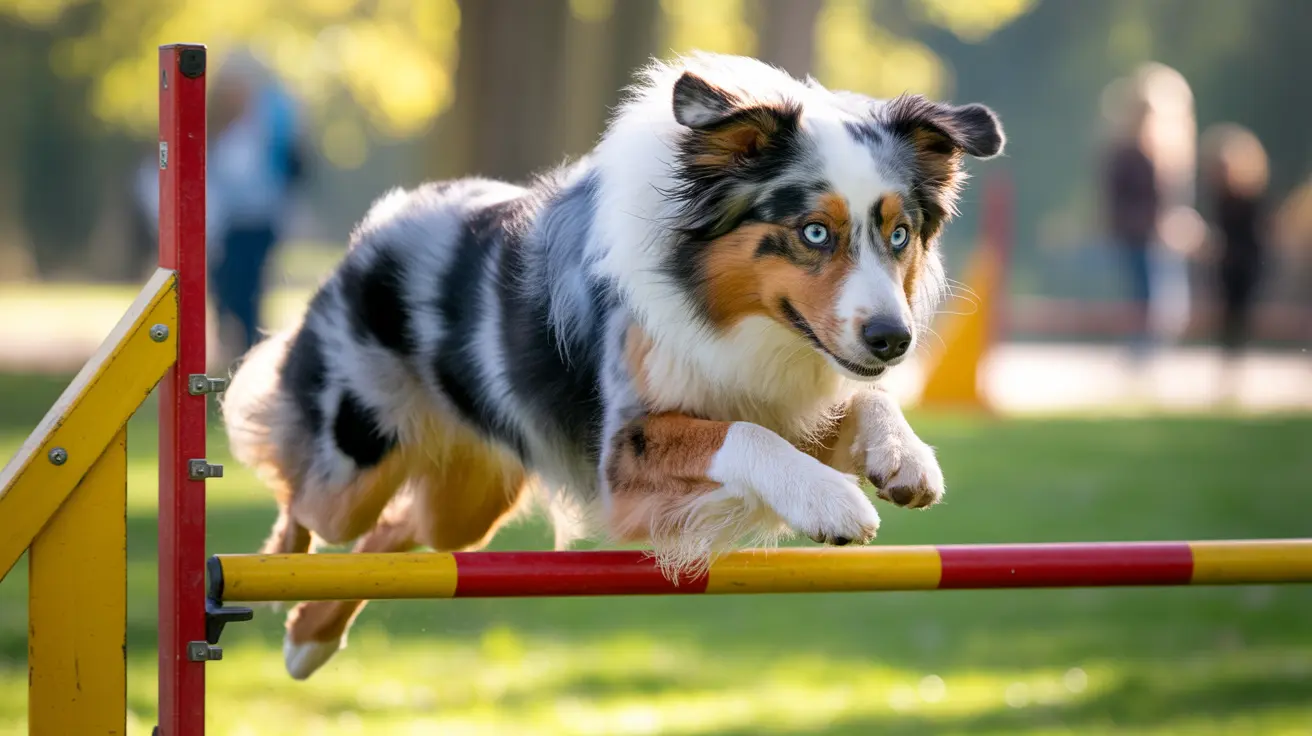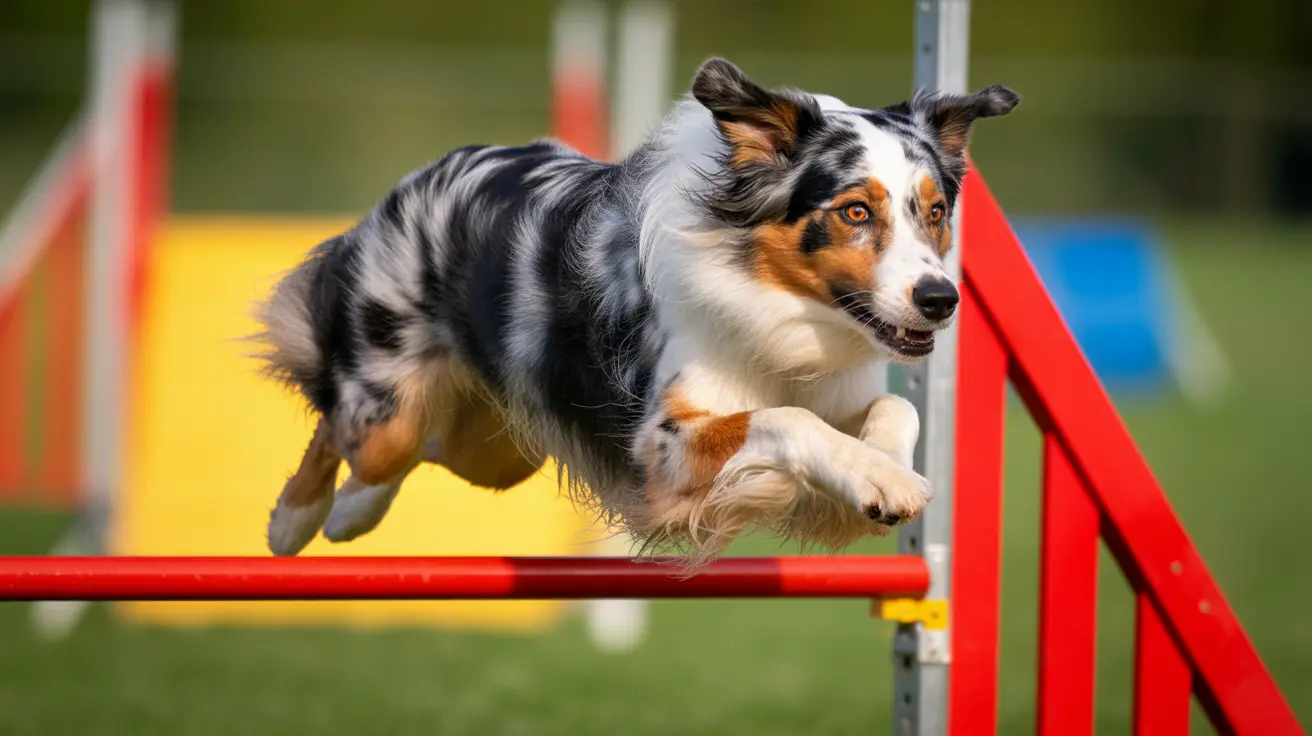A Shiba Inu dog receiving a veterinary examination from a professional in a white coat
{
"title": "Dog Penile Health: Comprehensive Guide to Canine Reproductive Care",
"subtitle": "Learn how to ensure your dog's reproductive health through proper anatomy knowledge, early problem detection, and proactive care.",
"name_en": "Dog Penile Health: Comprehensive Guide to Canine Reproductive Care",
"news_category": "diseases-symptoms",
"short_description": "Explore canine penile health, anatomy, common issues, and care tips for your dog's reproductive well-being.",
"long_description": "
Introduction
For many dog owners, understanding their pet's reproductive health can be a challenging yet crucial aspect of responsible pet care. Canine penile health plays a vital role in a dog's overall well-being, affecting both their physical comfort and quality of life. This comprehensive guide will help you understand normal anatomy, recognize potential issues, and know when to seek veterinary attention.
While this topic might feel uncomfortable for some pet owners, having accurate knowledge about dog penile anatomy and common health concerns is essential for providing optimal care. Early detection of problems and proper maintenance can prevent serious complications and ensure your furry friend stays healthy and comfortable.
Understanding Normal Dog Penile Anatomy
The foundation of proper dog penile care starts with understanding normal anatomy. A dog's reproductive organ consists of several key components that each play a specific role:
- Shaft and Glans: The main body and tip of the penis, important for reproductive function and urination.
- Erectile Tissue: Specialized blood-filled tissue that enables erections during mating.
- Urethra: The essential tube for urine and semen passage, running along the length of the penis.
- Prepuce: The protective sheath that covers and shelters the penis when not erect.
- Os Penis: A unique bony structure providing additional structural support, especially during mating.
- Bulbus Glandis: Swelling at the base of the penis during arousal, which aids in the reproductive process.
The Role of the Dog Penis Bone
Unlike humans, dogs possess a remarkable anatomical feature called the os penis, or penis bone. This bone adds rigidity to the penis during mating, making copulation possible and ensuring successful transfer of semen. It also helps maintain the proper alignment of the urethra, which is important for normal urination. Understanding the function and importance of the os penis can help pet owners recognize why certain injuries or abnormalities may require veterinary attention.
Common Penile Issues and Warning Signs
Recognizing Abnormal Conditions
Being able to distinguish between normal variations and symptoms that may indicate health problems is crucial for early intervention. Pet owners should be vigilant and watch for the following warning signs:
- Excessive or unusual discharge that appears discolored or unusually thick.
- Persistent swelling or redness of the penis or prepuce.
- Difficulty urinating, which may manifest as straining, frequent attempts, or discomfort.
- Visible injuries, sores, or open wounds that could suggest trauma or infection.
- Unusual growths or masses, which may be benign but can also signal tumors or other abnormal conditions.
- Excessive licking of the genital area, indicating irritation or discomfort.
Understanding Dog Penile Discharge
While some discharge, known as smegma, is normal in dogs, changes can signal health problems. Typical, healthy discharge should have the following characteristics:
- Clear to slightly yellowish in appearance.
- Minimal in amount, not pooling or dripping excessively.
- Without a strong or foul odor.
- Not accompanied by blood or pus.
If the discharge suddenly changes in color (green, thick yellow, bloody), increases in quantity, or develops a foul smell, it is important to consult a veterinarian. These symptoms may indicate infections, injuries, or systemic disease and require prompt attention to avoid complications.
Prevention and Maintenance
Regular Examination
Incorporating regular penile exams into your pet care routine can help you detect problems early. During these checks, make sure to look for:
- Unusual swelling or visible inflammation around the penis or prepuce.
- Signs of injury, cuts, or trauma which may occur during play or interactions with other animals.
- Changes in the appearance or consistency of discharge.
- Abnormal growths, lumps, or persistent changes in the skin.
- Behavioral signs of discomfort, such as licking, scooting, or reluctance to be touched in the area.
By becoming familiar with your dog's normal anatomy and behavior, you will be better equipped to identify early signs of trouble.
Proper Hygiene Practices
Maintaining good penile hygiene for your dog is important but should always be approached with care to prevent irritation or further complications. Some essential hygiene tips include:
- Clean only when necessary, typically if you notice debris or build-up.
- Use gentle, pet-safe cleaning products that are free from harsh chemicals or fragrances.
- Avoid the use of human cleansing products, which can disrupt the natural balance and cause irritation.
- Follow any specific hygiene recommendations provided by your veterinarian, particularly if your dog has a history of penile issues.
- After cleaning, monitor your dog for any signs of irritation, redness, or discomfort and discontinue if problems arise.
Keeping the area clean reduces the risk of bacterial growth, infection, and chronic irritation, supporting your dog's ongoing health.
When to Seek Veterinary Care
Prompt veterinary attention can prevent minor issues from becoming major problems. You should seek professional guidance if you notice any of the following:
- Persistent or worsening swelling of the penis or prepuce.
- Signs of infection, such as green, yellow, or bloody discharge or pronounced inflammation.
- Difficulty urinating or any apparent pain during urination.
- Unusual or unexplained bleeding from the penis or surrounding tissues.
- Behavioral changes including increased aggression, anxiety, or persistent licking of the genital area.
- Any other abnormal symptoms that do not resolve within a short period.
Timely veterinary intervention is key to diagnosing underlying causes and initiating effective treatment, which can help preserve your dog's health and well-being.
Frequently Asked Questions
- What is the normal anatomy of a dog's penis? The structure includes the shaft, glans, erectile tissue, urethra, prepuce, and a unique bone known as the os penis.
- Why do dogs have a bone in their penis? The penile bone, or os penis, provides structural support during mating and helps facilitate successful reproduction.
- What are common penile health issues in dogs? Dogs may experience infections, inflammation (balanoposthitis), abnormal discharge, tumors or growths, physical injuries, and congenital abnormalities.
- How do I recognize abnormal penile conditions in my dog? Watch for swelling, persistent bleeding, pus, foul odor, difficulty retracting the penis, or visible sores.
- What is paraphimosis in dogs? Paraphimosis is a potentially serious condition where the penis cannot retract back into the prepuce. This can cause pain, swelling, and restricted blood flow, requiring immediate veterinary care to avoid permanent damage.
- How should I clean my dog's penis? When necessary, gently wipe the area with a clean, damp cloth. Do not use soaps or chemicals unless directed by your vet. If you notice persistent debris, irritation, or odor, consult a veterinarian for additional advice.
- Why might my dog's penis appear red or swollen? Redness or swelling may result from minor irritation, allergies, trauma, or infections. Persistent or severe symptoms should be checked by a vet.
- When should I take my dog to the vet for penile issues? If you observe abnormal discharge, bleeding, swelling, wounds, or behavioral changes like excessive licking of the genital area, schedule a veterinary appointment promptly.
- Can behavioral issues affect penile health? Yes. Excessive licking, frequent or persistent erections, and stress-related behaviors can contribute to inflammation or increase the risk of secondary infections. Addressing underlying behavioral or environmental factors can aid in long-term health.
- How to prevent penile health problems in dogs? Maintain good hygiene, observe your dog for any changes, avoid rough play that may cause injuries, and schedule regular vet check-ups for early detection and preventive care.
Conclusion
Understanding and monitoring your dog's reproductive health is an essential aspect of responsible pet ownership. While it may seem challenging at first, regular observation and proper care can prevent many common issues. Always observe your dog for changes in behavior or physical appearance, and when in doubt, consult your veterinarian for professional guidance and treatment options. Prioritizing your dog's penile health helps ensure a happier, healthier companion for years to come.
",
Introduction
For many dog owners, understanding their pet's reproductive health can be a challenging yet crucial aspect of responsible pet care. Canine penile health plays a vital role in a dog's overall well-being, affecting both their physical comfort and quality of life. This comprehensive guide will help you understand normal anatomy, recognize potential issues, and know when to seek veterinary attention.
While this topic might feel uncomfortable for some pet owners, having accurate knowledge about dog penile anatomy and common health concerns is essential for providing optimal care. Early detection of problems and proper maintenance can prevent serious complications and ensure your furry friend stays healthy and comfortable.
Understanding Normal Dog Penile Anatomy
The foundation of proper dog penile care starts with understanding normal anatomy. A dog's reproductive organ consists of several key components that each play a specific role:
- Shaft and Glans: The main body and tip of the penis, important for reproductive function and urination.
- Erectile Tissue: Specialized blood-filled tissue that enables erections during mating.
- Urethra: The essential tube for urine and semen passage, running along the length of the penis.
- Prepuce: The protective sheath that covers and shelters the penis when not erect.
- Os Penis: A unique bony structure providing additional structural support, especially during mating.
- Bulbus Glandis: Swelling at the base of the penis during arousal, which aids in the reproductive process.
The Role of the Dog Penis Bone
Unlike humans, dogs possess a remarkable anatomical feature called the os penis, or penis bone. This bone adds rigidity to the penis during mating, making copulation possible and ensuring successful transfer of semen. It also helps maintain the proper alignment of the urethra, which is important for normal urination. Understanding the function and importance of the os penis can help pet owners recognize why certain injuries or abnormalities may require veterinary attention.
Common Penile Issues and Warning Signs
Recognizing Abnormal Conditions
Being able to distinguish between normal variations and symptoms that may indicate health problems is crucial for early intervention. Pet owners should be vigilant and watch for the following warning signs:
- Excessive or unusual discharge that appears discolored or unusually thick.
- Persistent swelling or redness of the penis or prepuce.
- Difficulty urinating, which may manifest as straining, frequent attempts, or discomfort.
- Visible injuries, sores, or open wounds that could suggest trauma or infection.
- Unusual growths or masses, which may be benign but can also signal tumors or other abnormal conditions.
- Excessive licking of the genital area, indicating irritation or discomfort.
Understanding Dog Penile Discharge
While some discharge, known as smegma, is normal in dogs, changes can signal health problems. Typical, healthy discharge should have the following characteristics:
- Clear to slightly yellowish in appearance.
- Minimal in amount, not pooling or dripping excessively.
- Without a strong or foul odor.
- Not accompanied by blood or pus.
If the discharge suddenly changes in color (green, thick yellow, bloody), increases in quantity, or develops a foul smell, it is important to consult a veterinarian. These symptoms may indicate infections, injuries, or systemic disease and require prompt attention to avoid complications.
Prevention and Maintenance
Regular Examination
Incorporating regular penile exams into your pet care routine can help you detect problems early. During these checks, make sure to look for:
- Unusual swelling or visible inflammation around the penis or prepuce.
- Signs of injury, cuts, or trauma which may occur during play or interactions with other animals.
- Changes in the appearance or consistency of discharge.
- Abnormal growths, lumps, or persistent changes in the skin.
- Behavioral signs of discomfort, such as licking, scooting, or reluctance to be touched in the area.
By becoming familiar with your dog's normal anatomy and behavior, you will be better equipped to identify early signs of trouble.
Proper Hygiene Practices
Maintaining good penile hygiene for your dog is important but should always be approached with care to prevent irritation or further complications. Some essential hygiene tips include:
- Clean only when necessary, typically if you notice debris or build-up.
- Use gentle, pet-safe cleaning products that are free from harsh chemicals or fragrances.
- Avoid the use of human cleansing products, which can disrupt the natural balance and cause irritation.
- Follow any specific hygiene recommendations provided by your veterinarian, particularly if your dog has a history of penile issues.
- After cleaning, monitor your dog for any signs of irritation, redness, or discomfort and discontinue if problems arise.
Keeping the area clean reduces the risk of bacterial growth, infection, and chronic irritation, supporting your dog's ongoing health.
When to Seek Veterinary Care
Prompt veterinary attention can prevent minor issues from becoming major problems. You should seek professional guidance if you notice any of the following:
- Persistent or worsening swelling of the penis or prepuce.
- Signs of infection, such as green, yellow, or bloody discharge or pronounced inflammation.
- Difficulty urinating or any apparent pain during urination.
- Unusual or unexplained bleeding from the penis or surrounding tissues.
- Behavioral changes including increased aggression, anxiety, or persistent licking of the genital area.
- Any other abnormal symptoms that do not resolve within a short period.
Timely veterinary intervention is key to diagnosing underlying causes and initiating effective treatment, which can help preserve your dog's health and well-being.
Frequently Asked Questions
- What is the normal anatomy of a dog's penis? The structure includes the shaft, glans, erectile tissue, urethra, prepuce, and a unique bone known as the os penis.
- Why do dogs have a bone in their penis? The penile bone, or os penis, provides structural support during mating and helps facilitate successful reproduction.
- What are common penile health issues in dogs? Dogs may experience infections, inflammation (balanoposthitis), abnormal discharge, tumors or growths, physical injuries, and congenital abnormalities.
- How do I recognize abnormal penile conditions in my dog? Watch for swelling, persistent bleeding, pus, foul odor, difficulty retracting the penis, or visible sores.
- What is paraphimosis in dogs? Paraphimosis is a potentially serious condition where the penis cannot retract back into the prepuce. This can cause pain, swelling, and restricted blood flow, requiring immediate veterinary care to avoid permanent damage.
- How should I clean my dog's penis? When necessary, gently wipe the area with a clean, damp cloth. Do not use soaps or chemicals unless directed by your vet. If you notice persistent debris, irritation, or odor, consult a veterinarian for additional advice.
- Why might my dog's penis appear red or swollen? Redness or swelling may result from minor irritation, allergies, trauma, or infections. Persistent or severe symptoms should be checked by a vet.
- When should I take my dog to the vet for penile issues? If you observe abnormal discharge, bleeding, swelling, wounds, or behavioral changes like excessive licking of the genital area, schedule a veterinary appointment promptly.
- Can behavioral issues affect penile health? Yes. Excessive licking, frequent or persistent erections, and stress-related behaviors can contribute to inflammation or increase the risk of secondary infections. Addressing underlying behavioral or environmental factors can aid in long-term health.
- How to prevent penile health problems in dogs? Maintain good hygiene, observe your dog for any changes, avoid rough play that may cause injuries, and schedule regular vet check-ups for early detection and preventive care.
Conclusion
Understanding and monitoring your dog's reproductive health is an essential aspect of responsible pet ownership. While it may seem challenging at first, regular observation and proper care can prevent many common issues. Always observe your dog for changes in behavior or physical appearance, and when in doubt, consult your veterinarian for professional guidance and treatment options. Prioritizing your dog's penile health helps ensure a happier, healthier companion for years to come.






